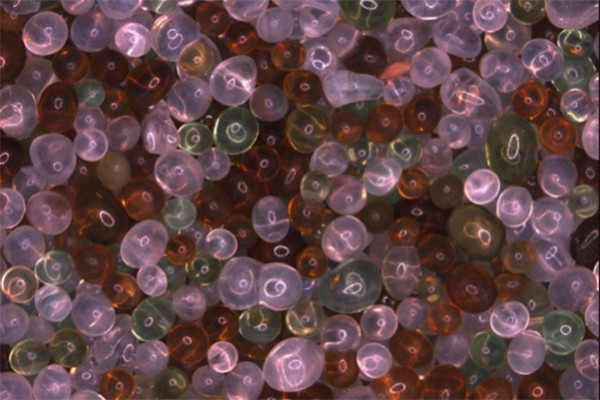UNIVERSITY PARK – Industrial and domestic waste materials are viable alternative sources of raw materials for engineering proppants — particles used to open rock fractures — for use in shale gas and oil recovery, according to Penn State material scientists John Hellmann and Barry Scheetz.
Writing in the current issue of American Ceramic Society Bulletin, the researchers describe innovative approaches for engineering high-performance ceramic proppants from waste streams including mixed glass cullet, mine tailings and even drill-cuttings from shale gas wells themselves.
In Pennsylvania, horizontal drilling and hydraulic simulation, more commonly referred to as hydrofracturing, are techniques used to extract gas from reserves where it is trapped in less permeable, tight shale formations such as the Marcellus and Utica plays.
In the hydrofracturing process, a mixture of water, silica sand or other particles, and chemicals is injected at high pressure into the well, causing the rock to fracture and release the gas. The sand and other particles are referred to as proppants since they are used to “prop” open the rock fractures, thereby creating a pathway for the gas to flow from the shale and into the well.
“Silica sand is relatively inexpensive, available and has a long track record of use as a proppant,” said Hellmann. “However, sand particles are quite angular and tend to pack. It also typically exhibits lower crush strengths and results in lower permeabilities relative to synthetic proppants, like the ones we are researching. Spherical particles, characteristic of the synthetic proppants, flow better, require less water and chemical additives for placement, and maintain higher permeability for longer periods of time than angular sand particles.”
Silica sands are routinely employed in the relatively shallow deposits, such as the Marcellus shale. Hellman said engineered synthetic proppants, which are substantially stronger and more spherical, will be required for deeper deposits that contain other condensed phases and that experience substantially higher closer stresses, such as the Utica and Bakken plays.”
According to Industrial Minerals, a market leading resource for minerals intelligence, each year more than 30 million tons of proppants are used in hydrofracturing, and demand is projected to increase to 45 million tons by 2017. Engineering proppants from waste materials offers not only a savings in costs but the additional environmental benefit of diverting millions of tons of waste from landfills.
“Our engineered materials have the potential to not only provide a new source of high-performance proppants, but at the same time do so in a potentially more environmentally conscious way,” said Hellmann. “Waste materials are diverted from landfills and are used to engineer proppants that are more efficient, requiring less water and less chemical additives in the hydrofracturing process – that’s a pretty green message.”
Hellmann is professor of materials science and engineering and associate dean for education in the College of Earth and Mineral Sciences. Scheetz is a professor of materials, civil and nuclear engineering in the College of Engineering. Other authors include Hellmann and Scheetz’s former students Walter Luscher, Pacific Northwest National Laboratory; David Hartwich, ceramic research engineer at ANH Refractories; and Ryan Koseski, senior research engineer at Saint-Gobain North American R&D Center.
Professors Hellmann and Scheetz are founding directors and officers of Nittany Extraction Technologies LLC, which licenses intellectual property related to core-shell microstructural evolution in proppants and manufacturing of glass-ceramic proppants from Penn State. These relationships have been reviewed by the University’s Institutional Conflict of Interest Committee and are currently being managed by the University.
